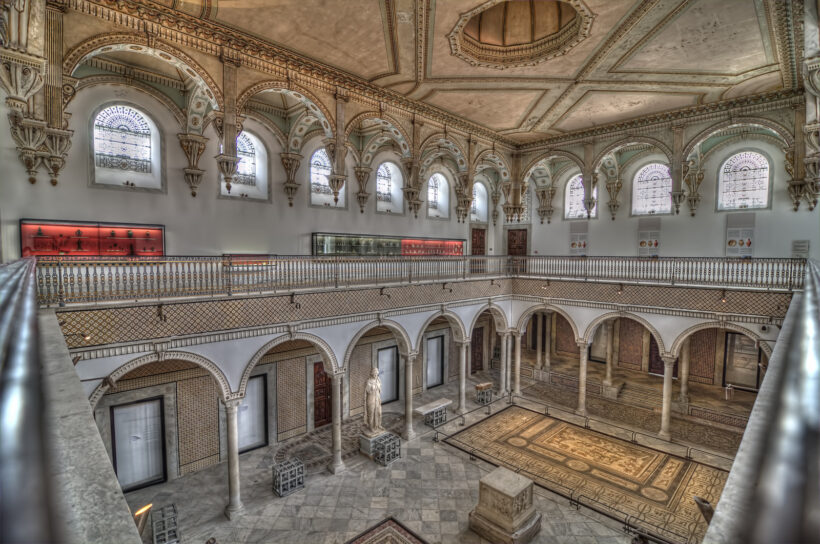Following the resumption of Tunisian parliamentary activities on March 13th, 2023, Tunisia’s National Museum is finally about to reopen after calls from campaigners have grown more persistent.
The Bardo National Museum, a fulcrum of Tunisian heritage and cultural tourism, has been closed since President Kais Saied suspended all parliamentary work on July 25th, 2021. The president’s decision was a response to intense and often violent confrontations between assembly members, which Tunisians unanimously deemed abhorrent and vulgar.
In what followed over a year-long reticence of all three powers by President Saied, a new parliament was elected in December 2022 and January 2023, with a voting turnout of 11 percent. The parliament sat for the first time on March 13th in a session that excluded everyone but state media. The legitimacy of the new parliament is still not recognized by the opposing coalition.
Contrarily to the parliament, the museum’s shutdown had nothing to do with Bardo itself but with the territory it occupies. The Bardo Museum is in a hall that is adjacent to the Assembly, whose entrances had been closed to prevent representatives from forcing their way into the parliament. The military rank that ‘guarded’ (blocked) the Assembly, and naturally the museum, had eventually become an inherent part of the site.
On 18 March 2015, a terrorist attack targeting the museum resulted in the death of twenty-one people, mostly European tourists, and injured around fifty others. Nevertheless, the museum held a ceremonial reopening only days after the attack. And on the 29th of March, French President François Hollande, Italian Prime Minister Matteo Renzi, several other world leaders, and thousands of demonstrators marched in Tunis under the slogan The World Is Bardo (Le Monde est Bardo). Ever since the museum has held a message of peace in its register.
Seeing that its closure hinged on a mere technicality, many cultural enthusiasts wondered if there was another reason behind the shutdown of Africa’s second-largest museum. A campaign with the slogan “Hors les murs” (outside the walls) was behind the dissemination of sundry pictures of the museum’s vast collection of artworks on social media, among which was a fresco of Roman poet Virgil’s Aeneid and another of Ulysses tied to his ship’s mast while they escaped the song of the sirens after surviving the Trojan War.
Tijani Haddad, a former minister of tourism, told The Arab Weekly, “The authorities should reopen the Bardo Museum to visitors considering its importance as a cultural heritage icon in the world.” He added, “We have not yet understood the reasons that led to its closure and the state must explain the motives for its decision”.
On a similar note, Tunisian historian Abdellatif Hannachi said, “We regret that this historical and cultural landmark has remained closed until now. It was the source of important financial revenues for the Heritage Institute (which oversees cultural sites) and the Ministry of Culture. Its closure is prejudicial to tourism. This was in fact the reason terrorists targeted this monument in 2015.”
Now that the parliament has resumed its activities, Tunisians expect the National Museum to reopen anytime soon. A working meeting was held on March 1st, 2023, at the ministry headquarters, overseen by Chief of Staff, Lassad Said, and Minister of Cultural Affairs, Hayet Ketat Guermazi, to discuss the details of the renovation process, and of the new artifacts and programs in work for the opening ceremony. Now, only days separate Tunisians from reuniting with their National Museum.






